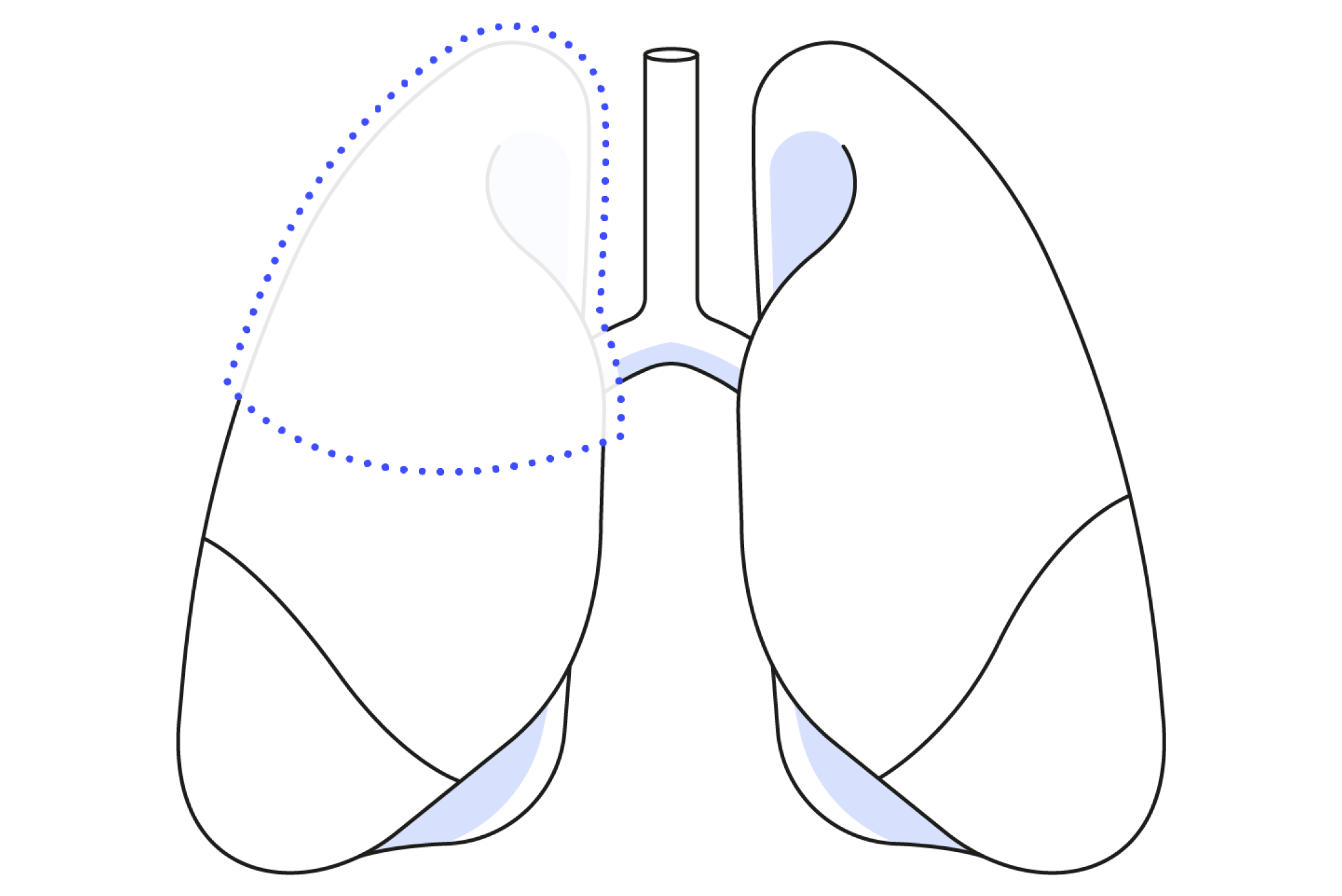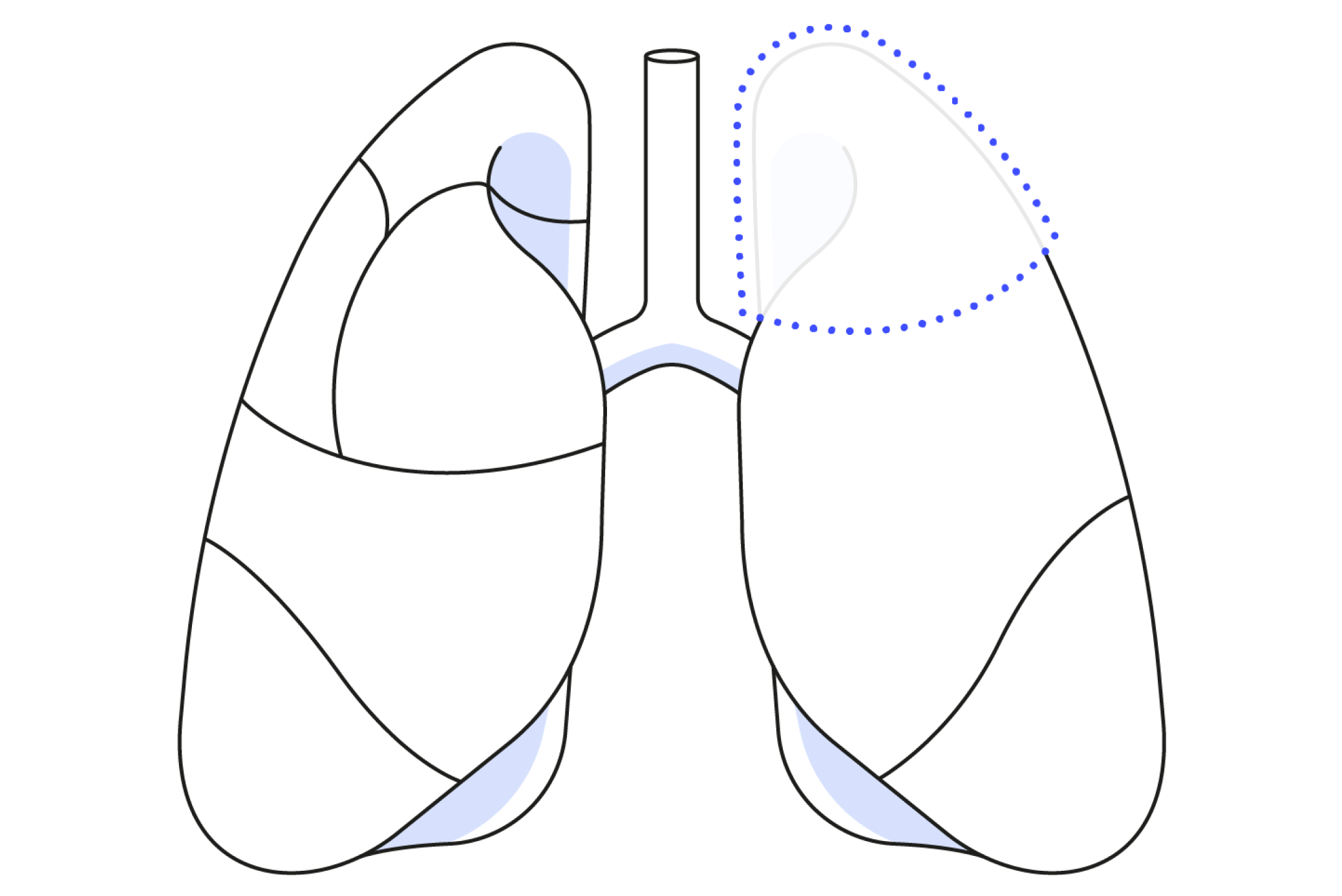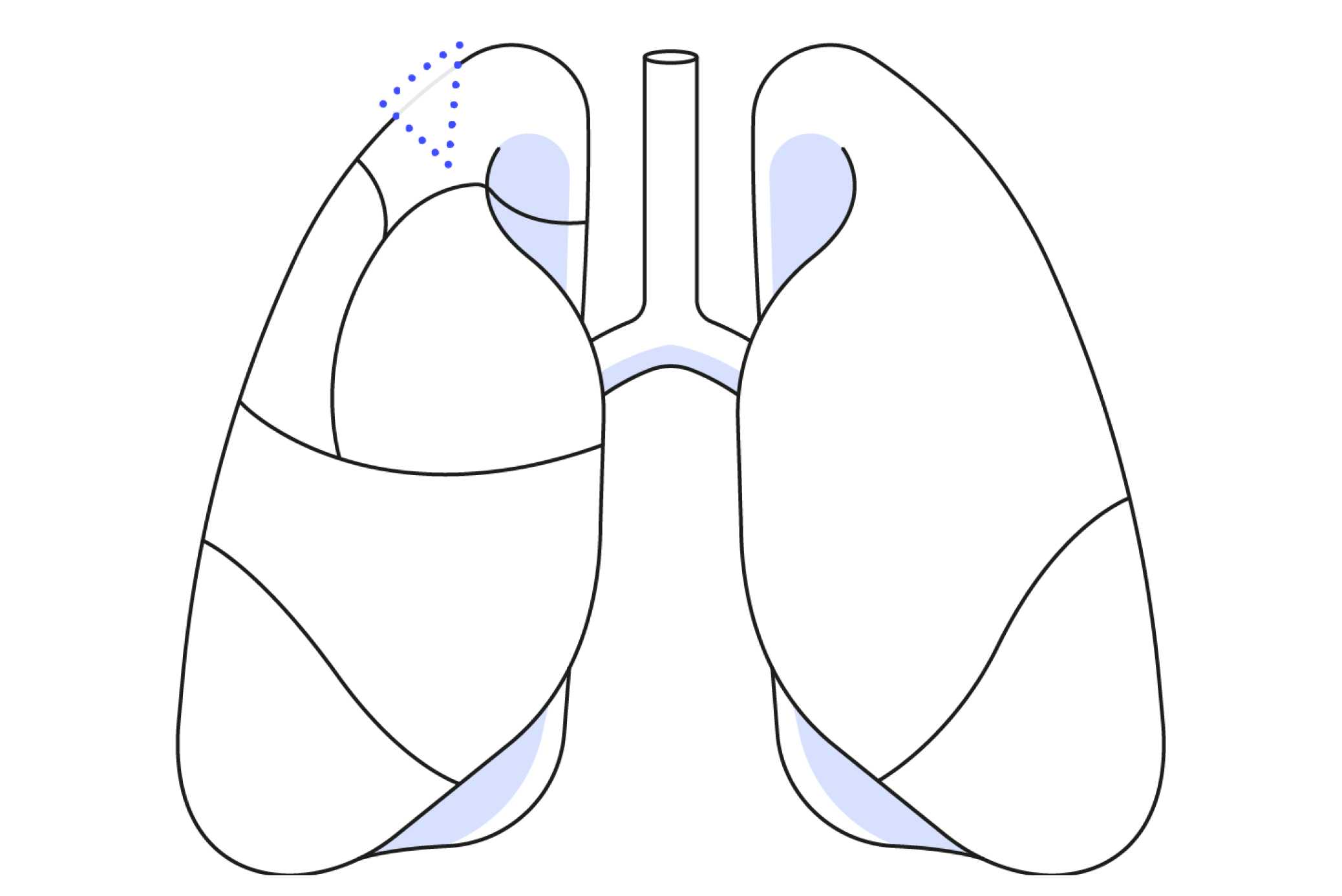Lung Surgery
Surgery with a da Vinci system offers a minimally invasive option for lung surgery. Procedures include lobectomy, wedge resection, and segmentectomy.
Consider your options
Your doctor may recommend a lung operation for a benign (noncancerous) condition or cancer. If you’ve received a lung cancer diagnosis, know that you’re not alone. It’s the third most common cancer diagnosed in the U.S., behind breast and prostate cancer.1
Learning what’s available for your lung condition can help you navigate your path to care. You and your doctor can discuss your choices and decide which is right for you. On this page, you’ll find:
- Information on types of lung surgeries
- The ways doctors can perform lung surgeries
- Questions you can ask your doctor
- How to find a surgeon who performs lung surgery with a da Vinci system
Lung surgery types
Doctors use da Vinci surgical systems to perform three kinds of lung surgery.
How doctors perform lung surgery2,3
There are three ways doctors can perform lung surgery. One is traditional open surgery. The other two are minimally invasive surgeries. All require general anesthesia so that patients are asleep and don’t feel pain during the operation. Complications after lung surgery can include infection, bleeding, abnormal heart rhythm, persistent air leaking from the lungs, and pain.
Open chest surgery (thoracotomy)2-4
Doctors must make an incision (cut) that can be less than three inches to more than eight inches long. Because the rib cage protects the lungs, doctors may also need to remove a rib or separate ribs. This allows doctors to look directly at the lung area they’ll be operating on and use handheld tools to perform the surgery. Open chest operations can take between two and six hours. Patients may stay in the hospital for five to seven days. Nerve damage during open surgery can result in a condition called post-thoracotomy pain syndrome. The syndrome can cause pain that persists for months following surgery.
Minimally invasive lung surgery4-6
Minimally invasive approaches allow surgeons to avoid open surgery’s long incisions. Surgeons also don’t have to spread ribs. Instead, they insert tiny lighted cameras and instruments through small incisions. Minimally invasive lung surgeries typically result in less pain, less blood loss, shorter recovery times, and smaller scars compared to open lung surgery. But as with any surgery, complications are possible. Patients may stay in the hospital overnight or longer depending on the complexity of the case.
Surgeons can use two methods to perform minimally invasive lung surgery:
- Video-assisted thoracoscopic surgery (VATS): Surgeons make two to four incisions up to 1.25 inches long.4 They insert a small lighted camera (thoracoscope) and surgical instruments through the incisions. Surgeons operate using straight instruments that are long enough to reach the lungs. During VATS, surgeons stand next to the patient. They operate while watching the camera’s images on a video screen.
- Robotic-assisted thoracic surgery: Surgeons using da Vinci surgical systems perform lung surgery through a few incisions about the width of your fingertip.4 The surgeon inserts a tiny 3D, high-definition camera into one incision. The other incisions are used to insert tiny wristed instruments that move like a human hand. Instead of standing next to the patient, the surgeon sits at a console in the operating room. The surgeon guides the instruments from the console to perform the surgery.
While minimally invasive lung surgery offers some advantages, it may not be the right approach for every patient or procedure. If your doctor has recommended lung surgery for your condition, ask about the options available. The questions below may help with that conversation.
Questions you can ask your doctor
- What medical and surgical options are available for me?
- Which is best for my situation?
- What are the differences between open, laparoscopic, and robotic-assisted surgery?
- If I am a candidate for lung surgery, how can I prepare for it?
- Can you tell me about your training, experience, and patient outcomes with da Vinci?
- How will I feel after surgery?
- What does my recovery care plan look like?
- How do I help my incisions heal well?
Ask your surgeon about their da Vinci surgery outcomes
If you are considering da Vinci lung surgery, talk with your surgeon about the surgical outcomes they deliver using the da Vinci system. For example, ask about:
- Length of hospital stay
- Complication rate
- Rate of returning to the hospital within 30 days of surgery
- Reoperation rate
- Transfusion and/or blood loss
- Chance of changing to an open procedure
- Length of operation
- Mortality rate
There are additional surgical outcomes you may want to talk about with your doctor. Please ask to discuss all important outcomes. Every surgery involves risks, and you can read more about those associated with lung surgery.
Your care journey
- Cancer Stat Facts: Common Cancer Sites. SEER. National Cancer Institute. Web. Accessed 7 June 2024.
- What is a Thoracotomy? American Lung Association. Web. Accessed 10 June 2024.
- Lung Surgery. Medline. National Library of Medicine. Web. Accessed 7 June 2024.
- Lobectomy. The Patient Guide to Heart, Lung, and Esophageal Surgery. The Society of Thoracic Surgeons. Web. Accessed 10 June 2024.
- Surgery for Non-Small Cell Lung Cancer. American Cancer Society. Web. Accessed 10 June 2024.
- Minimally Invasive Thoracic Surgery. American Lung Association. Web. Accessed 10 June 2024.


